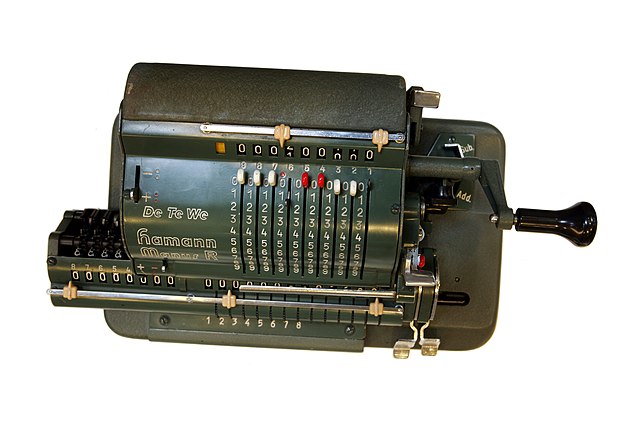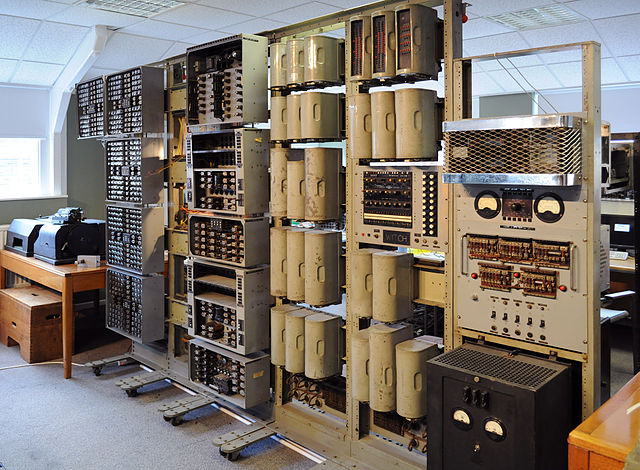Tide-Predicting Machine No. 2
Tide-Predicting Machine No. 2, also known as Old Brass Brains, was a special-purpose mechanical computer that uses gears, pulleys, chains, and other mechanical components to compute the height and time of high and low tides for specific locations. The machine can perform tide calculations much faster than a person could do with pencil and paper. The United States Coast and Geodetic Survey put the machine into operation in 1910. It was used until 1965, when it was replaced by an electronic computer.
Tide Predicting Machine No. 2
This photo shows the largest of the three sections of Tide-Predicting Machine No. 2. The gears on the left transmit power from the hand crank. The components on the right contribute to the computation of the time of high and low tides.
A tide formula component crank on Tide-Predicting Machine No. 2. The mechanical arrangement (a slotted crank yoke) converts circular motion to a vertical motion that traces a sinusoid. The operator adjusts the position of the pin on the crank to represent a component of the tide formula at a specific coastal port before starting computations. The pin position affects the amplitude and phase of the sinusoid.
mechanism for generating sinusoidal motion component
A mechanical computer is a computer built from mechanical components such as levers and gears rather than electronic components. The most common examples are adding machines and mechanical counters, which use the turning of gears to increment output displays. More complex examples could carry out multiplication and division—Friden used a moving head which paused at each column—and even differential analysis. One model, the Ascota 170 accounting machine sold in the 1960s, calculated square roots.
Hamman Manus R mechanical computer, produced in Germany by the DeTeWe company between 1953 and 1959
Curta Calculator
Harwell Dekatron







